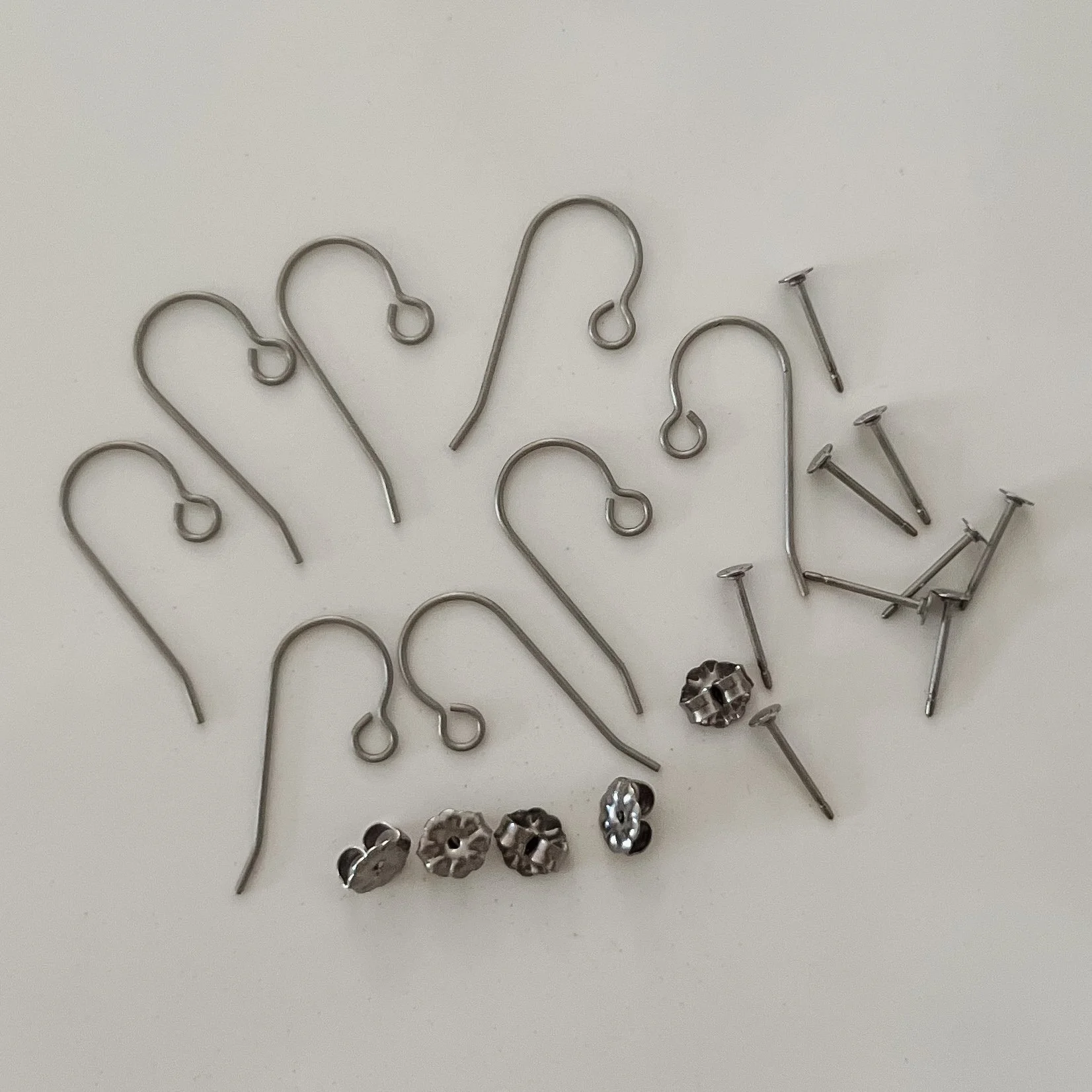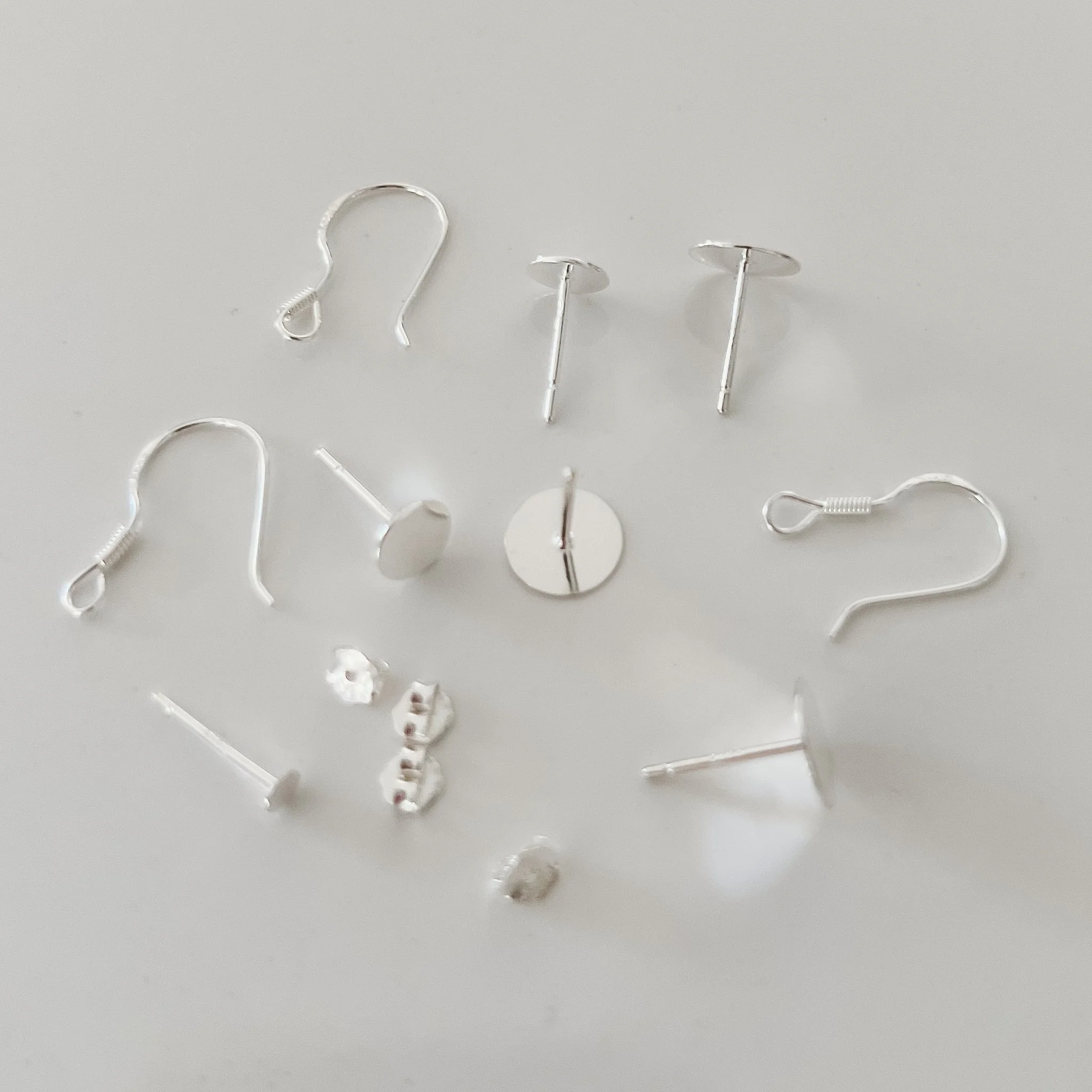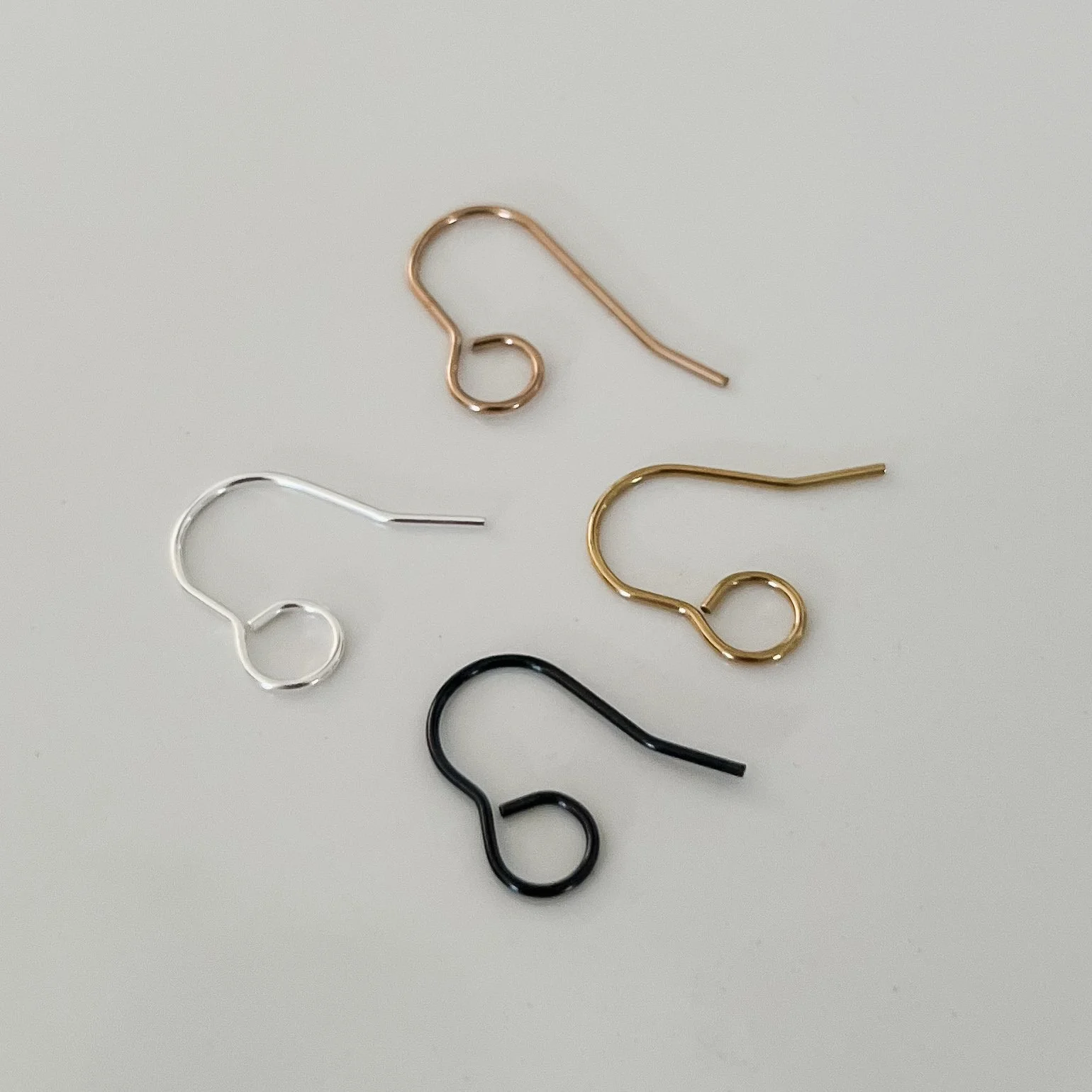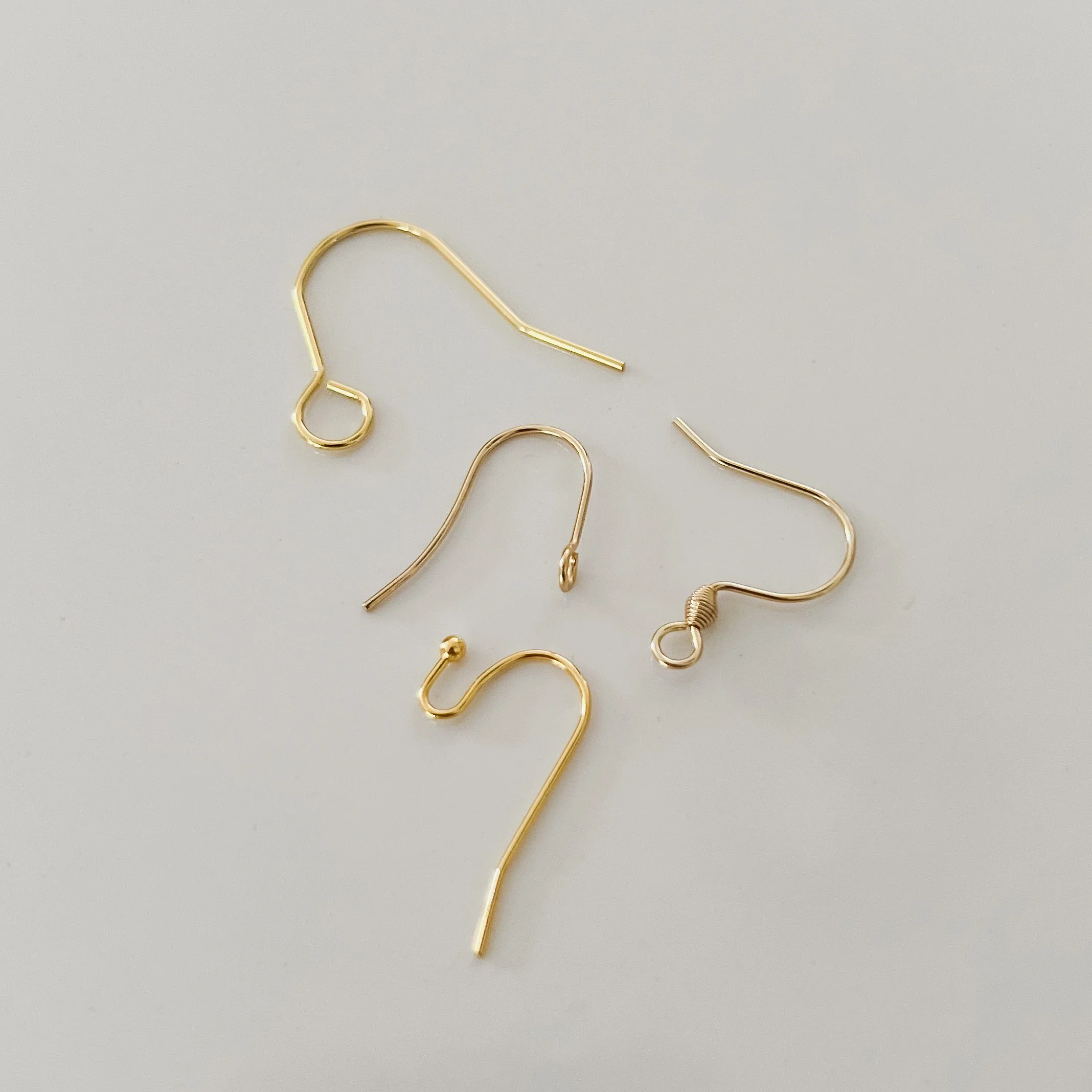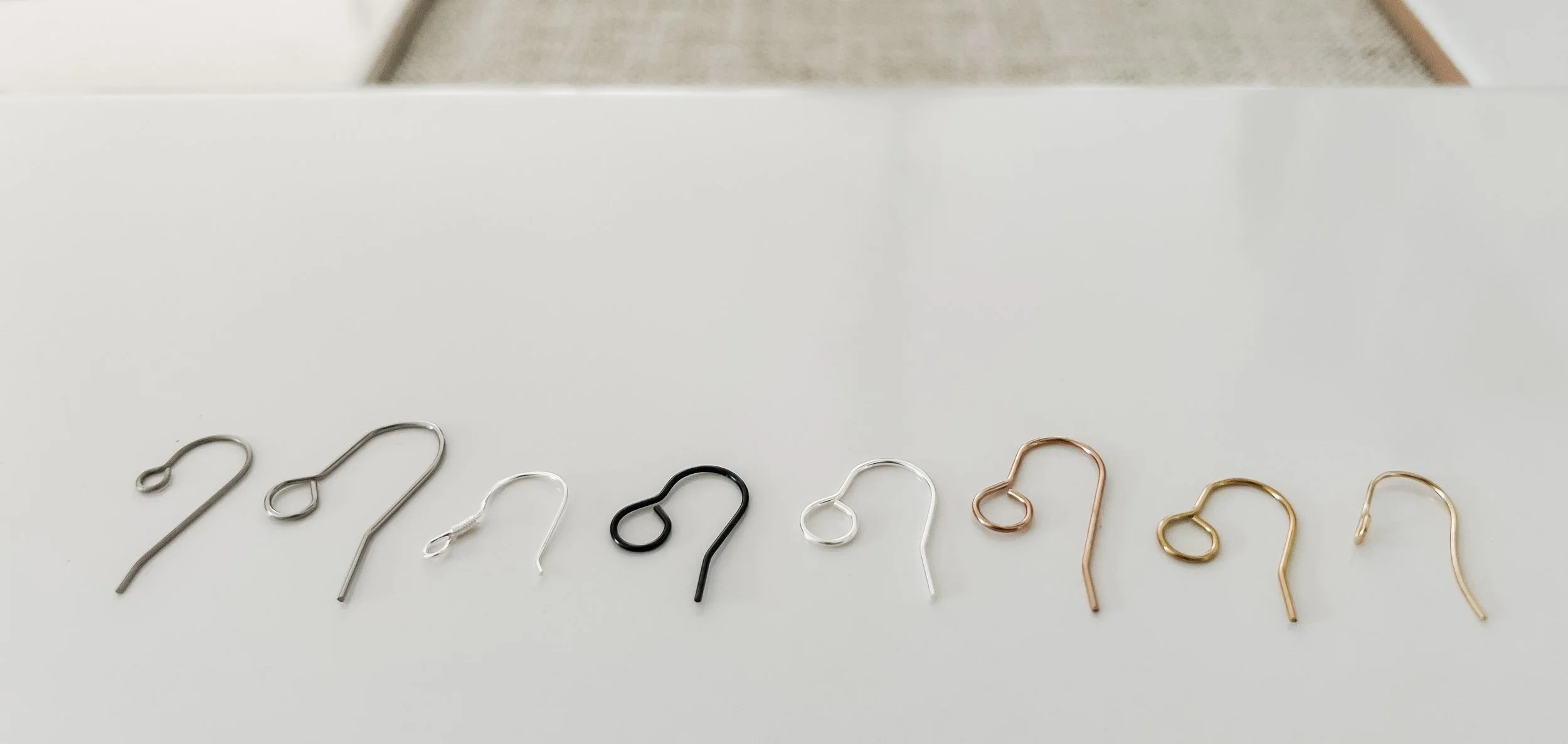
Metal Types
Here at Lava Makes, I care very deeply about what you put on your ears and I want to make sure you get the best choice for your skin.
Here is a rundown of the metals I use in my earrings.
Brass
Brass is a metal alloy, primarily made from copper (approximately 60-90%) and zinc (approximately 10-40%). Although it’s an incredibly hardy metal that lasts a long time, I typically stay away from brass due to the fact that it tarnishes easily, and can irritate sensitive ears. That’s usually due to the copper content. You will only find brass in a very small number of my charms. Never the pin that goes into your ear lobes! I will not use unknown metals in my earring findings. Cleaning brass is easy however. If you find it tarnishing, use a dot of jewellery cleaner and wipe it gently with a warm cloth. If you don’t have jewellery cleaner, some lemon juice and baking soda works a treat.
304 stainless steel is a type of steel known for its corrosion resistance and strength. It can contain up to 18% chromium and 8% nickel. It’s an excellent option for those with more sensitive ears, but be mindful if you have any allergies to nickel. It can be plated with silver, black, gold and rose gold, making it an excellent choice for more colours.
304 Stainless Steel
316L surgical stainless steel has even more hypoallergenic properties which make it an affordable and attractive option for earrings. It contains higher amounts of molybdenum (a trace mineral), creating more resistance to tarnishing. 316L surgical stainless steel has approximately the same amount of nickel as 304 stainless steel, which may not be suitable if you have a nickel allergy. 316L stainless steel can be plated with silver, black, gold and rose gold, making it an excellent choice for more colours.
316L Stainless Steel
Titanium
Titanium is a very well known, silver-white metal used for medical implants and body piercings. It is non-toxic. I use Grade 1 Titanium, which is completely nickel free. It is incredibly hypoallergenic for those who have allergies with stainless steel findings. Titanium comes in a dark steel colour only with a dull finish.
925 Sterling Silver
Sterling silver is a precious metal with a higher price point but one that is incredibly hypoallergenic and resistant to tarnishing. It has a beautiful bright silver shine. It contains 92.5% silver and 7.5% copper. It is completely nickel free, but please be mindful if you have a copper allergy. Another thing to be mindful about, is that Sterling Silver is incredible SOFT. It is very malleable due to the high level of silver. It can dent and bend very easily.
Rhodium
Rhodium is a member of the platinum group. It’s a silvery-white metal which is resistant to corrosion and considered a rare precious metal. You will find that some of my stainless steel earrings are rhodium vacuum plated which give them a gorgeous, bright and shiny finish. My rhodium plated earrings also give that extra layer of hypoallergenic peace of mind.
Gold
14K Gold consists of 58.3% pure gold, and 41.7% of another metal alloy.
I tend to use 14K gold with stainless steel most.18K Gold consists of 75% pure gold, and 25% of another metal alloy.
24K Gold consists of 100% pure gold with no other alloys. I do not use 24K gold as it is highly malleable and expensive.
When jewellery is gold plated, it means there is a thin layer of 14K or 18K gold, electroplated onto the metal.
When jewellery is gold filled, it means the 14K or 18K gold tube is filled with the metal alloy. It lasts longer and is more resistant to tarnishing as the gold alloy is thicker and weighs more than the plated version.
Anything under 24K gold (100% gold) cannot be considered hypoallergenic, however if the alloys used in 14K or 18K gold are titanium, surgical stainless steel or rhodium, it will suit most people with ear sensitivities.





